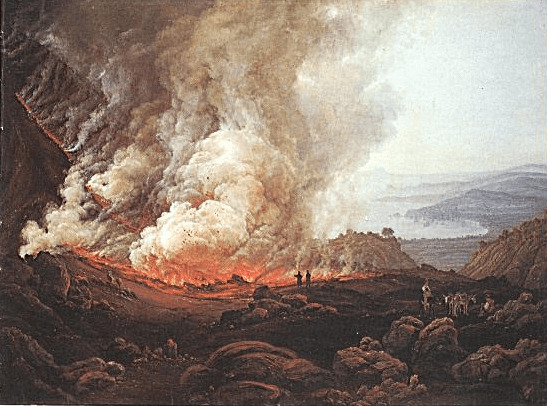Chapters
Pliny the Younger (Plinius Minor) was born as Gaius Caecilius Cilo in 61 CE in Comum Novum (now Como in Lombardy, in northern Italy). Pliny was a lawyer, writer, and Roman official. He witnessed the eruption of Vesuvius in 79 CE.
Origin and education
Pliny was the son of Lucius Caecilius Cilo and Plinia Marcella and the grandson of the senator and landowner Gaius Caecilius. There is a suspicion that Pliny the Younger may have also had siblings. He belonged to the equites. His father, who held the position of aedile in the province, died at an early age. Pliny grew up under the care of his mother and Lucius Verginius Rufus, the famous Roman leader who crushed the rebellion against Nero in 68 CE.
He spent the first years of education at home. Then he went to Rome, where he attended rhetoric lessons with Quintilian and Nicetes Sacerdos from Smyrna. During this time, young Pliny developed a closer relationship with his famous relative, uncle Pliny the Elder, his mother’s brother. When Pliny the Younger was eighteen, his uncle died saving victims of the Vesuvius eruption. As it turned out in his will, Pliny the Elder handed over his property to his young nephew, whom he also adopted. As a result of the document, Pliny the Younger changed his name from Gaius Caecilius Cilo to Gaius Plinius Caecilius Secundus.
According to 19th-century historians, Pliny, especially when compared with Seneca and Tacitus, was considered an average wealthy citizen. Meanwhile, superficial research allowed concluding that Pliny had 10,000 hectares of land, which qualified his estates to the latifundial type. At the same time, it must be assumed that the value of arable land, forests, pastures, vineyards, and finally suburban and urban properties, especially around Rome, was different.
Pliny’s land goods were concentrated in three regions of Italy: the first in Umbria near Tifernum Tiberinum on the border with Etruria, the second near Comum Novum on Lake Laryn and the third in Lazio near the seaside settlement of Vicus Laurentium. The latter estate – despite its proximity to Rome – brought the smallest income, which he himself wrote, explaining that it was there that most of his works were written: “nec agrum, quem non habeo, sed ipse me studiis excolo”. On the other hand, the greatest income was brought to him by goods in the vicinity of Lake Laryjskie, which occupied his economic attention. Both centres away from Rome brought him over a million sesterces of annual income.
Pliny the Younger got married three times. The first time he was eighteen he married Veccius Proculus’ stepdaughter. His second spouse was Pompeia Celerina. The third was Calpurnia, daughter of Calpurnius and granddaughter of Calpurnius Fabatus. In one of the letters, we can read the sadness that accompanied the marriage after Calpurnia miscarried their child.
Political career
Pliny was particularly active in the legal sphere. In about 81 CE he was a judge in centumviri, private law courts. Then he was a famous accuser and defender of numerous provincial governors: Baebius Massa from Baetici, Marius Priscus from Africa, Gaius Caecilius Classicus from Baetici and Gaius Julius Bassus or Varenus Rufus from Bithynia et Pontus. He was then appointed tribunus militum to the 3rd Gallica Legion in Syria for six months.
He became a senator in the late 80s, and in 88 or 89 CE started his political career by taking over the bursary. In 91 CE became the people’s tribune, and in 93 praetor. However, he withdrew briefly from public life, discouraged by Domitian’s terror. In 94-96 CE became prefect of the military treasury (praefectus aerarii militaris), 98-100 prefect of the treasury of Saturn (praefectus aerari Saturni), 100 with Cornutus Tertullus, 103 propraetor of Bithynia, 103-104 augur (publicly elected). He returned to big politics under Emperor Trajan, who trusted him and entrusted him in 110 CE. imperial governorship (legatus Augusti) of the province of Bithynia et Pontus.
Pliny the Younger reached the next levels in the official hierarchy, becoming an exemplary career model (in the positive sense of the word) of those times. To top it all off, he had endured years of tyranny under Emperor Domitian.
Death
Pliny the Younger died suddenly during his stay in the province of Bithynia et Pontus around 113 CE. The year of death is suggested by letters that do not refer to events from later years.
Orator and writer
Pliny was an excellent orator, as is confirmed by the only preserved speech (Panegyric) in honour of the emperor Trajan. He went down in history as an epistolographer. His 247 letters (Epistulae) from 97-109 CE have been preserved, which provide a wonderful picture of life at that time. Pliny wrote about the eruption of Mount Vesuvius, funerals, births, and life in the city and in the countryside. The greatest values are letters to Tacitus (where the death of Pliny the Elder is described) and letters to the emperor (including about the persecution of Christians). The style of Pliny the Younger deserves attention – clear, matter-of-fact, concise. The letters are in the form of studied literary dissertations. His letters, unlike his Cicero correspondence, were originally intended for publication, so it is not strictly private correspondence.
The most famous (and cited) fragment of the works of Pliny the Younger today is the description of the eruption of Mount Vesuvius in 79 CE, when his uncle, Pliny the Elder, who observed the cataclysm, died unexpectedly.









